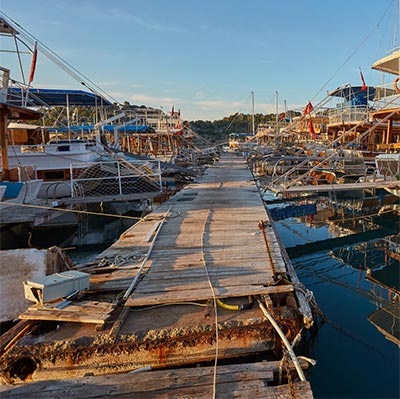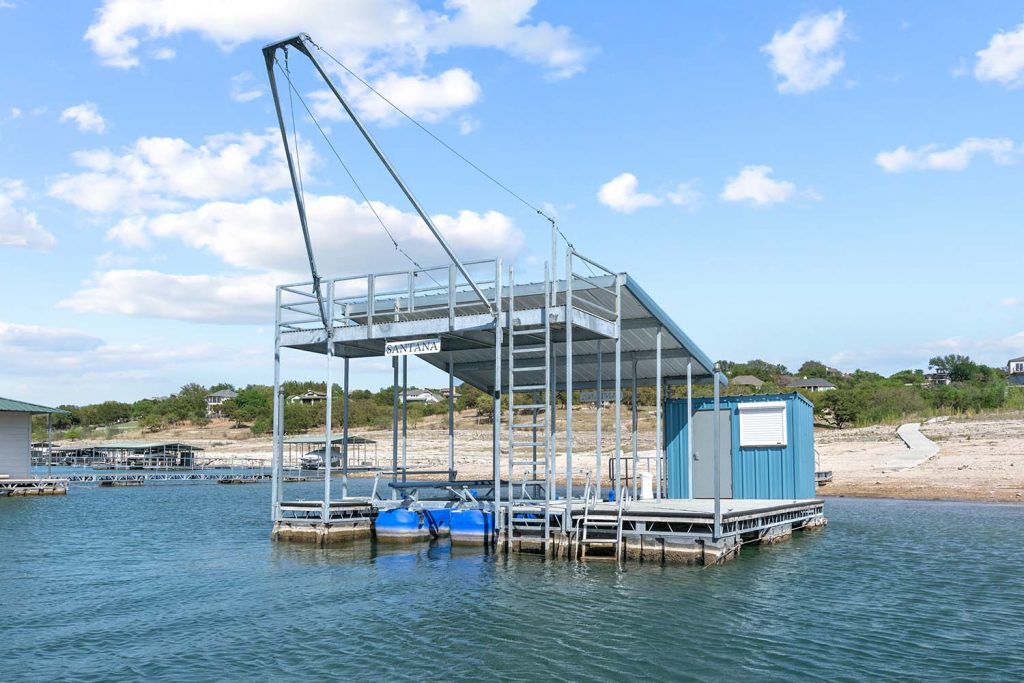Seasonal Preparations: When to Arrange Your Dock Repairs
Seasonal Preparations: When to Arrange Your Dock Repairs
Blog Article
Exactly How to Address Common Dock Repair Work Issues for Safe Water Tasks

Identifying Common Dock Issues
Determining usual dock issues is essential for maintaining the capability and security of your beachfront home. Normal inspections can aid uncover troubles prior to they become serious, making sure both the long life of the dock and the safety and security of those that use it.
An additional common issue is the degradation of flotation devices. These devices are necessary for keeping the dock resilient, and any damage or slits can cause the dock to list or sink. On a regular basis looking for leakages or water logged drifts can preempt extra substantial concerns.
Furthermore, algae and barnacle buildup on the dock's surface can develop unsafe and hazardous conditions. This biofouling not just postures a risk to users but can also increase the deterioration of the dock products.
Finally, examining for indications of rust on metal elements is vital. Corrosion can compromise the stability of the dock's framework, making it unsafe. By regularly recognizing these usual dock concerns, you can guarantee that your dock remains secure and useful for many years ahead.
Repairing Rotting Wood
When addressing the issue of decomposing wood on your dock, it is vital to act quickly to avoid additional wear and tear. Begin by completely examining the entire framework to identify all influenced areas. Utilize a screwdriver to penetrate the timber; if it sinks in easily, the wood is likely decayed and requires prompt focus.
When determined, eliminate the rotted sections utilizing a saw or carve. Make certain to reduce to healthy, strong timber, guaranteeing you eliminate all endangered material. After removal, deal with the staying wood with a timber preservative to avoid future rot. This treatment will certainly aid safeguard versus dampness, which is the primary reason for wood decay.
Following, replace the gotten rid of sections with marine-grade lumber or pressure-treated timber, which are much more immune to water damages. Safeguard the new items with stainless-steel or galvanized fasteners to stop deterioration. Furthermore, using a water-proof sealer to the brand-new wood can provide an added layer of defense.
Securing Loosened Boards
How do you ensure your dock continues to be useful and risk-free for all its users? One vital element is securing loosened boards, which can otherwise pose considerable dangers. Loose boards not only enhance the danger of stumbling however can additionally jeopardize the architectural honesty of the whole dock.

For reinstallation, utilize galvanized or stainless steel screws, as these products offer exceptional resistance to rust in marine atmospheres. Ensure the screws are long sufficient to permeate deep into the underlying assistance structure, however not as long that they stick out with the dock's surface. Pre-drilling pilot holes can assist avoid the timber from splitting.
Finally, keep a normal evaluation routine to recognize and deal with any kind of new concerns immediately. By safeguarding loosened boards successfully, you add to the overall safety and longevity of your dock, making it a trusted platform for water activities.
Stabilizing Unstable Pilings
Ensuring the stability of unstable pilings is vital to maintaining a practical and risk-free dock. Unstable pilings can compromise the whole framework, posturing significant risks to users and possibly resulting in expensive fixings. The initial action in maintaining these necessary components is an extensive examination. Take a look at the pilings for indicators of rot, damage, or moving. Use resource a level to look for vertical alignment and guarantee they are driven deep enough right into the substrate to provide sufficient assistance.
If the pilings are discovered to be unsteady, one reliable technique for reinforcement is using added supporting. visit this website Cross-bracing with dealt with lumber or galvanized metal can significantly enhance security. Support the braces securely to both the pilings and the dock framework to disperse loads uniformly.

Normal upkeep and periodic reassessment of the pilings' stability are vital to ensuring long-lasting dock security and functionality.
Replacing Rusty Hardware
Attending to unsteady pilings is just one aspect of maintaining a dock's integrity; an additional vital worry is changing corroded hardware. Gradually, direct exposure to moisture and salt can cause the oxidation and rust of brackets, screws, and bolts, jeopardizing the whole structure's safety and security. Routine evaluation for rust is necessary, especially after severe weather or seasonal changes.
When corroded hardware is identified, prompt activity is required. Begin by picking marine-grade stainless steel or galvanized hardware, both created to stand up to the rough marine environment. Ensure next page that you have the ideal devices, such as wrenches and screwdrivers, to securely eliminate the old, corroded pieces without causing more damage to the dock.
After getting rid of the rustic hardware, extensively tidy the impacted areas to remove any recurring rust or particles. Apply a rust-inhibiting guide to exposed steel surface areas prior to installing the brand-new equipment. Tighten up all fixtures safely to avoid future helping to loosen, and regularly examine the fittings to make certain ongoing stability.
Replacing corroded equipment not only extends the dock's lifespan yet also considerably boosts the security of water tasks. By proactively handling corrosion, you protect both the structure and its customers, making sure a safe and pleasurable waterside experience.
Conclusion
Regular assessments and upkeep are crucial to address common dock fixing concerns and ensure risk-free water tasks. By identifying and remedying issues such as rotting timber, loose boards, unstable pilings, and corroded hardware, architectural stability and longevity can be significantly improved. The application of appropriate treatments and marine-grade materials additionally fortifies the dock against ecological stressors. Such positive steps add to the overall safety and security and capability of dock structures, cultivating a safe setting for water-based tasks.
Guaranteeing the safety of water activities hinges dramatically on the correct upkeep and fixing of docks (Dock Repairs). These tools are important for maintaining the dock resilient, and any kind of damages or punctures can trigger the dock to checklist or sink. By routinely determining these typical dock concerns, you can make sure that your dock stays secure and useful for years to come
Guaranteeing the security of unstable pilings is vital to keeping a secure and useful dock.Normal assessments and upkeep are necessary to address typical dock fixing issues and ensure safe water activities.
Report this page